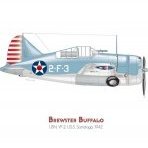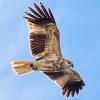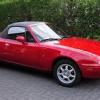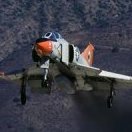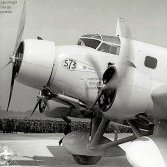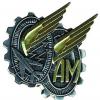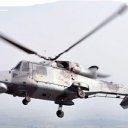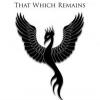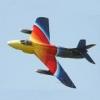Search the Community
Showing results for tags 'Special hobby'.
-
Tempest Napier Sabre Engine (4393 for Eduard) 1:48 CMK by Special Hobby Eduard’s new Tempest is hardly light on detail, but the cowling is moulded closed with no engine within. The Sabre is a huge lump with a H-shaped block and sleeve-valves in order to produce up to 2,000hp, it was shoe-horned into the Tempest’s fuselage with little room to spare. This set from CMK is a resin upgrade to the kit with 54 detailed parts on 15 casting blocks in grey resin, and arrives in a yellow-themed blister pack with header card and instructions within. The kit will need to be adjusted with your finest razor saw to remove the cowling from the exhaust stacks upwards, and back to the firewall joint, as shown in the instructions. The main part of the upper engine is supplied in one large piece of resin to which the ancillary parts are added, then the firewall, supports and some more ancillaries are glued in place, including some delicate hoses, tiny catches/levers (with spares supplied) and just a little extra 0.3mm and 0.5mm wire from your own supplies needed, which is pointed out in blue. The exhausts are fitted individually on each side, and the thick cowling panels you removed earlier are replaced with highly detailed and more scale accurate new parts to be placed around the airframe on the wings or ground. You should note that the underside of the engine isn’t depicted, just from the exhausts up for light maintenance. There is another set that includes the tanks between the firewall and instrument panel if you feel like removing more panels. No colour call-outs are given during construction, but if you google “Napier Sabre Engine” you’ll be able to find plenty of images to help you out, with a choice of green or shades of grey to black for the block seeming to be your main choices. Conclusion The detail in this set is phenomenal, and with sympathetic painting it should look superb on your finished model. Very highly recommended. Review sample courtesy of
-
Hawker Hunter F.6 Wheels (4392 for Airfix) 1:48 CMK from Special Hobby With Airfix’s new kit now on the market and readily available, CMK have created a set of highly detailed wheels for this much-loved aircraft to improve on what’s in the kit box. Arriving in a yellow-themed blister pack held together with a single staple, it contains three wheels including nose wheel and two main wheels, each on their own individual casting block that is attached to the wheel by the slightly flattened contact patch that gives the model the impression of weight, without looking like the erks haven’t put enough air in the tyres. The main wheels have detailed bolts on the front hub and a flatter rear with hole for the axle, which will need a little deepening to attach to the kit. The nose wheel has six spokes on each side, and all three have circumferential tread on their rolling surface, with the supporting webs carefully located so as not to disrupt or damage the tread pattern, which is great planning. The main attachment point will be under the wheel, so it just needs cutting off and sanding smooth so that the wheel stands up squarely without any gaps underneath. Highly recommended. Review sample courtesy of
-
Hello Friends, My follow up project to the Great Wall Hobby F-15I Ra`am was the Special Hobby SMB2 Super Mystere. Here are the notable features and my thoughts on the kit......... 1. Built mostly straight from the box. Used 0.6mm brass tubes to replace front pitot tubes under the intake. 2. Used Model Master, Mission Models, and some old ( but still useful ) Polly Scale acrylic paints. 3. Weathered with Flory & Vallejo washes, pencils, paint, and chalk pastels. 4. Depicted from No. 105 Squadron based at Hatzor, Israel. 5. Plumbers putty and small lead fishing sinkers were used to have the Mystere sit properly. 6. The kit supplied decals were excellent and responded well to setting solution. I found the kit to be mostly delightful with a few “fiddly” sections. For some odd reason, I had a couple of issues completely eliminating some of the seams. The kit is very well detailed and with little need for aftermarket accessories. I hope you enjoy this version of the French designed fighter-bomber. Thank you in advance for all of your comments and criticisms. With much respect, Mike
- 14 replies
-
- 37
-

-
- 1/72
- Special Hobby
-
(and 1 more)
Tagged with:
-
Aero C-3A Czechoslovakian Transport & Trainer Plane (SH48197) 1:48 Special Hobby The Aero C-3 was the Czech built Siebel Si 204, which was in turn based on the earlier Siebel Fh 104 Hallore. It was initially ordered by the Luftwaffe for the same role it performed in their service, having its canopy altered to the stepless type, possibly to mimic that of the He.111 that pilots might progress to. As a footnote to its German service a Siebel had the dubious honour of being the last aircraft to be shot down by the Allies in WWII. After WWII Czech company Aero produced almost 200 airframes in training (C-3A), bombardier training (C-3B), transport (D-44) and civilian (C-103) flavours, which carried on in service until the end of the 40s and beyond, while a few airframes soldiered on a little longer in Hungarian service. The Kit Released alongside the German original boxing, this is a new tool from Special Hobby, and although I’d never heard of it until the sample arrived, it has a stubby appeal with its strangely shaped fuselage and blunt glazed nose. It arrives in a standard blue/white themed Special Hobby box, and inside are a surprising nine grey sprues and one clear sprue in a ziplok bag, plus the decal sheet and instruction booklet. The wingspan hits you immediately, as it has surprisingly long wings, and the boxy fuselage isn’t exactly tiny either. The external surfaces are engraved with SH’s usual fine panel lines, and the part count for the detailed internals is also pretty high although some parts aren’t used, particularly on sprue I, which has literally only one part used. Construction begins with the cockpit, which is assembled on a wide floor part with side consoles, centre console, detailed seats on large framed bases, instrument panel and twin control columns, backed by a bulkhead with cloth-covered doorway into the rear of the aircraft. Unlike many aircraft models, the floor doesn’t end behind that bulkhead, but extends all the way to the rear, with a well-detailed radio rack, navigation table, three passenger seats and another bulkhead plus two upstands that make up a luggage bay at the rear. An additional two seats are fitted facing aft behind the cockpit, and the front of the cockpit floor is joined to the main part and finished at the front with the rudder pedal assembly in duplicate. Before this assembly can be hidden in the fuselage halves, you can elect to cut out either of the rear doors, with the missing plastic replaced by a new part later, and you should add the high stowage racks and other detail parts to the inside along with the windows and the wing root caps that prevent you from seeing the attachment points if you have a good view of the inside. With the two halves joined, the canopy can be applied to the stepped front, consisting of the domed nose part and a separate C-shaped canopy, the former having a few small details added inside before it is fixed in place. After this the top of the fuselage is decked out with a number of lumps and bulges that differs slightly depending on its camouflage option. This won’t leave much of the top seam for you to hide, which could well be a time-saving bonus if you plan accordingly. The C-3A has long wings, and these are mounted low on the fuselage, so are each made up from two parts that incorporates the nacelle bulges to which the cowling, exhausts and intake trunking are added, then each one is slotted into the appropriate wing root and is joined by the H-shaped tail, which fits on two smaller tabs at the rear. The landing gear can be left off until after painting, and consists of a sloped leg with integral brace to which two more are added on the sides. The oleo then attaches to this assembly and is bracketed by a pair of gear bay doors and a two-part wheel with smooth tread. There is one under each nacelle as you’d expect plus a small tail wheel with split yoke. Horn balances are fitted to the top and bottom of each elevator, an antenna at the rear of the cockpit with aerial leading to the starboard rudder, a pair of two-bladed props with spinner caps are made up from four parts each, then finally if you have opened up the hatches on the side, the replacement parts are fitted along with a ladder for the larger of the two. Markings There are four decal options included on the decal sheet with four-view drawings in colour at the rear of the instruction booklet, with option D the only deviation from the standard olive green over light blue. From the box you can build one of the following: No.388 US-53 Air School Regiment, Trĕncin July 1951 No.384 AK-4 Instructional Regiment – Air Force Officers College Hradec Králové, 1954 No.363 S-14 Air Force Signals School, Chrudim, 1948 No.unknown Aviation Research Centre, Letňany, 1951 The decals are printed in-house with good register, sharpness and colour density, and include a number of instrument decals for the interior. Conclusion This is a good kit of an unusual (from a British point of view) and interesting aircraft, with some excellent internal detail and some simple schemes that will speed your finishing. If you have a problem with completing kits like I do, one of the Olive Drab machines would make an ideal sanity build, although the camouflaged option is soft-edged and wouldn’t over-face you with masking. Highly recommended. Review sample courtesy of
-
There's been several excellent Firefly builds on the forum over the past few years and I thought it high time that I dusted off my special hobby kit and gave it a go myself. I'll be using all the information gleaned from the previous builds, in particular that of Navy Bird who was brave enough to build two Special Hobby kits of these wonderful aircraft as once. Australian Fairey Firefly stickers are pretty hard to come but I did manage to secure what appears to be a more recent printing from Red Roo depicting VX388/207Q (AS5) from HMAS Vengeance and VX385/205K (Mk5) from HMAS Sydney in 1953 latter Korean War schemes. I'm very tempted by VX388 which just happens to now reside at the Camden Museum of Aviation and was the subject of Navy Bird's target tug version. Here she is in Stewart Wilson's excellent Sea Fury, Firefly and Sea Venom book. I also have a hankering to represent a Mk.4 from HMAS Sydney during the late 1940's with a Dark Slate Grey/EDSG/Sky scheme. I have the following airframe in mind which is here being flown by one of my late father's friends, and still with Royal Navy codes. I'd need to cobble together some stickers of course which may be the hardest part of that scheme but I'd also be unsure about cockpit colours, whether it was all black as in the latter marks, or had one or more cockpits in interior green. Still some time to decide. Progress to date has involved separating the resin cockpit components from the pour blocks wearing the requisite gloves, mask and eye protection, and tidying up the fuselage halves. A coat of primer can't be too far away. As this is my first resin cockpit, I might also ask what glue do people prefer with resin - superglue (cringe) or epoxy (messy)?
-
SMB-2 Super Mystère / IAI Sa'ar (SH72345) 1:72 Special Hobby The Dassault Super Mystère holds the distinction of being the first production Supersonic aircraft in Western Europe. Dassault developed the design from the Ouragan through the Mystère models to the Super Mystère. While earlier models could go supersonic on a dive this aircraft could achieve it in level flight. The new aircraft with its thinner wing and greater sweep angle entered production in 1957 and left French service in 1977. Supersonic performance was also helped by the introduction of an afterburning engine. A Mystère B4 was looked at to replace it, but this lost out to the Mirage III. As well as the French Air Force, the aircraft would serve with the Israeli Air Force and see combat in the 1967 and 73 wars. The only other user was the Honduran Air Force. These again saw combat in the numerous border conflicts they had. In 1973, the Israeli Air Force and Honduras Air Force upgraded their aircraft with a non-afterburning version of the Pratt & Whitney J52-P8A engine and new avionics. In Israeli service these upgraded SMB.2s were also known as the IAI Sa'ar from the Hebrew meaning Storm. The Kit The kit is a new tool from the Special Hobby / FF.ROM collaboration of design & manufacture. The kit arrives on 9 sprues plus a clear one. The detail and quality is what we have come to expect from these companies of late and does not disappoint. This boxing includes extra sprues for the Israeli Sa'ar version and the weapons it carried. Construction starts with the intake. This is full length down to an engine front at its rear. How much will actually be seen is another matter? The top of the front wheel well then fixes to the intake trunking. The rear of the fuselage also gets the same treatment with a full length exhaust finished off with a nozzle. Next up the cockpit is made up. There is the base, to which the instrument panel, sides and rear bulkhead is fitted, the control column is also fitted at this time. Next up the intake trunking, jet pipe and cockpit can all be installed into the main fuselage halves along with the main gear wells. The fuselage can then be closed up. Following this we move onto the wings. These are of a conventional form of left & right wings with an upper and lower half to each. Separate clear wing tip lights are provided which is a nice touch. Once the wings are done, these along with the single part tail, and the two tail planes can be added to the main fuselage. The nose ring is also added at this stage. The main and front landing gear is then built up and added along with the undercarriage doors, To finish up the ejection seat is built up and added tot he cockpit along with the instrument coaming. Lastly the canopy and windscreen are added. The canopy can be modelled in the open position. If underwing stores are required then a pair of fuel tanks, and a pair of short range AAMs, napalm canisters and 250 Kgs bombs are provided. Decals This boxing of the kit gives three choices of markings; 096 from 105 Sqn, Hatzor, 1973. (3 colour top camo with Yellow ID markings). 909 IAI. Ist aircraft to be rebuilts with an ex Skyhawk engine (Brown/Blue Grey camo). 25 from 105 Sqn, Hatzor, early 1970s. (3 colour top camo). All the decals are printed by cartograf so there should be no issues with them at all. Conclusion This is another good looking Aircraft which has been crying out for a new kit. Highly recommended. Review sample courtesy of
-
Last one for 2019. Special Hobby 1/72 Me 209V1. Not a great kit to build Canopy fit not great and getting the landing gear to fit was a struggle, The kit supplied scissor links were way over scale so I made some PE ones. While trying to fit the gear I dropped the kit breaking them off. Those PE bits went into the black hole under my model bench. Decals were really thin and broke in many places. Paint it AK Air series RLM83 blue over black primer. Used SH resin replacement wheels.
-
VAUTOUR IIN "Armee de l'Air All weather Fighter" 1:72 Special Hobby The Sud Aviation Vautour (Vulture) stems from a 1951 request from the Armée de l'Air for a jet aircraft capable as acting as a bomber, light attack aircraft, or an all weather interceptor. The renamed Vautour II would subsequently be built in all three versions, entering service in 1958, and leaving active front line service in 1978. Various test aircraft stayed around through to the 1990's. The aircraft would feature an all metal fuselage with a mid fuselage mounted wing. The engines were mounted in underslung pods. A distinguishing feature of the aircraft was the main undercarriage units on the centre line with outriggers in the engine pods. The Cyrano Radar was originally developed for the Mirage but were fitted to some Vautours for testing and one such aircraft was sold to Israel. The Aircraft would never see any combat with the Armée de l'Air, however it would with its only export customer the Israeli Defence Forces. Israel purchased 28 Vautours and they were used in the six day war and the War of Attrition. In fact the type did score an aerial victory over an Iraqi Hunter. 15 aircraft were lost to combat and they were replaced by Skyhawks in 1971. The Kit The original of the kit date back to the Azur kit which was new in 2011. This kit represents a Vautour IIN two seat all weather interceptor version with the Cyrano radar nose. You get the original kit with the new nose and drop tanks in resin. There are also a good number of additional resin parts including the camera pods under the test aircrafts engine pods. TBH a lot of the resin parts are very small and it looks like it might be difficult to separate them without causing damage. The man plastic parts are good quality with restrained panel lines. Films are provided for the instrument panels, and to round things off there is a small PE fret. To kick things off in the construction depart we start with the cockpit (shock). The two seats are made up each with four plastic parts, and PE seatbelts. The rudder pedals attach to the back of the instrument panel and this is then added to the coaming. The cockpit is then made up with the other side of the cockpit floor being the roof of the front gear bay. The rear bulkhead is added along with the mid bulkhead between the two cockpits. Side consoles are then added to the front & rear pits. The control column is added as are the seats. The underside bulkheads for the front gear bay are added. The front main gear leg is then built up. This is a complicated part with the main leg, upper scissor parts and reaction mechanism all to be built up. The twin wheels can then be added. Once this is finished, the complete cockpit along with the rear main gear well can be added to the fuselage halves and they can be closed up. The rudder is then added. . Once the main fuselage is complete the attention moves to the wings. these are one part in the main for each side with only the inner wing needing a second part. The wings are then added. The engine pods are made up from two halves and the modeller needs to put in the intake, resin exhaust and wheel wells for the out rigger wheels which were contained in the engine pods. Once complete the pods are attached to the wings. The the front gear bay doors and the rear gear strut & wheels are added.. The tailplanes are added (note there are different tailplanes for one of the decal options) along with the POE wing fences, and rear gear doors. The outrigger gears need then to be built up and installed into the engine pods. This is followed by the doors to these pods. Lastly the external tanks and camera pods are added if needed. Clear parts These are clear and distortion free. Markings Markings for 3 aircraft are provided. The decals look to be in house, they are in register, bright, and have minimal carrier film. 306/30-MA, Escadrille 2/30, 1963 357/92-AD 92 Escadre de Bombardement 333/6-QQ Escadrille 2/6 1960 Conclusion An unusual looking aircraft which can should build up well. Very highly recommended. Review sample courtesy of
-
Special Hobby is to re-release (link) its 1/48th Focke-Achgelis FA-223 Drache kit as captured a/c - ref. SH48201 Box art was on display this weekend at IPMS Belgium National/Plastic & Steel 2019. And today (13/10/2019) Scalemates reproduced not only the info but also the original Britmodeller © picture reframed without the due credits (link). Britmodeller frequently copied but never equalled! V.P.
- 7 replies
-
- 1
-

-
- Drache
- Special Hobby
-
(and 1 more)
Tagged with:
-
I'm excited to be finally building a Sea Fury, it's such an iconic fighter and seems a very popular subject on the forum. I was delighted to find one of the options will complement my Firefly, being from the same carrier air wing. I've never made a Special Hobby kit before, but my first impression is a good one. The plastic looks nice and there are even some resin parts, and two vac-form canopies. Nice decals too, though I wish they included the Korea stripes as my painting skills aren't really up to something so straight! Anyone got any spares that would fit!?
- 10 replies
-
- 4
-

-
- 1/72
- Special Hobby
-
(and 1 more)
Tagged with:
-
Bücker Bü 181 Bestmann 1:48 Special Hobby The Bücker Bü 181 Bestmann is a conventional single engine low wing monoplane training aircraft with side by side seating and twin controls. Construction is wood on the rear fuselage and wings with a tubular steel frame for the main cabin area. The aircraft would be powered by a 105 hp Hirth HM 500 engine. The aircraft was designed in the late 1930’s with the maiden flight taking place in 1939. The aircraft was selected by the Reichsluftfahtministerium (RLM) to be the standard primary trainer for the Luftwaffe with production beginning in 1940. Despite being built as a trainer the aircraft was used in the light transport and liaison roles. Late in the war due to desperation some aircraft were converted to carry four Panzerfaust launchers, and others to carry three 50kg bombs. The aircraft saw limited service in these roles with a little success but resulting in heavy losses. Bücker built most of the aircraft for the Luftwaffe but due to the high demand production was also subcontracted to Fokker in Amsterdam & Zliner in Zlin. Hägglund & Sőner in Sweden would build 120 under license, the aircraft being designated Sk 25 in Swedish Service. Post war in 1950 Heliopolis of Egypt gained a license from Zliner to produce the aircraft for the Egyptian Military and other Air Forces of the region, these were called the Gomhouria (Republic). Over 300 being built. In total over 3400 Bestmanns were built. None of the German aircraft survive but a fair few licence built Swedish & Egyptian ones do. The Kit This is a new tool kit from Special Hobby featuring three sprues of light grey plastic, a canopy sprue, a small sheet of photo-etch and a couple of resin parts. Where needed the panel lines are fine & recessed, the fabric detail is also restrained. Construction starts where else but in the cockpit. The PE seatbelts are added to the two seats and these are then added onto the cockpit floor which incorporates the rear bulkhead. The rudder pedals and control columns are added along with the cockpit sides. lastly to complete the cockpit section the instrument panel is added. Decals are provided for the instruments. Once the cockpit section is complete it is added into the fuselage section along with the rear cockpit decking. Next up the wings are constructed, these are of conventional upper/lower, left & right construction. Once together they can be added to the main fuselage along with the tail planes. Next up then engine front part (in resin) and the cover are added to the front. On the underside of the engine the exhausts are added. These are provided in resin and are very thin so take care removing them from the casting block. Once the man airframe is together the canopy can be added along with the fairing behind it. The fixed landing gear is added, along with the propeller and a pair of prominent grab handles. To finish off the trim tabs are added to the rudder and tail planes. Decals Decals are from Cartograf and should pose no problems. Markings are provided for 3 examples; SF+WR, Pilot Training School, FFS A/B 23, Kaufbergen, Germany Summer 1943. GL+SI, Pilot Training School, FFS A/B 43, Crailsheim, Baden-Württemberg, Germany September 1943. A-255 Swiss Air Force, Duendorf, 1950. Ex Luftwaffe TP+WC landed and interned April 1945. The modeller will need to paint the white areas for the wings on the Swiss Example but not the fuselage. Conclusion This is a great new tooling of an important WWII training aircraft which was used by many operator post war. Highly recommended. Review sample courtesy of
-
After the 2018 newsletters (link) here are the Special Hobby newsletters 2019 n°1 - January 2019 - http://www.specialhobby.info/2018/12/news-from-special-hobby.html V.P.
- 18 replies
-
- 2
-

-

-
- Special Hobby
- newsletter
-
(and 1 more)
Tagged with:
-
I really shouldn't be doing this....but as I have just finished a big project at work I am hopeful I might get some bench time over the next month or so. If that is correct then I have an outside chance of actually completing a GB. Anyway having looked through the stash this is one of the few kits that qualifies. I have never made a Special Hobby kit before but I am aware of the short run nature of the product. Will see how I get one. As always all comments welcome. Cheers Dave
-
This is a build from a couple of years ago which has been resurrected and cleaned up. When I built this I was quite pleased with it until I was taking the pictures. I was trying to take a picture to compare to the one shot of the real aircraft I could find. I just couldn't get the angle quite right and it dawned on me that I have a model with one wing slightly low! I did take the model around the show circuit and only a very few noticed but it nagged at me and she was swiftly retired to the Loft. However, a friend loved it and started his Mk.II. Forewarned by my problem has done a splendid job including a metal spar to keep things in line (He's and engineer or something!). Anyway, he has asked me to resurrect my errant build to display at Telford alongside his Mk.II so here she is. Actually, it is an absolutely beautiful kit - Special Hobby have come a long way. Other than the wing, the only problems I had was resurrection of lost panel and rivet lines on the nose after cleaning up the joint. Everything is out of the box except for the radio aerial which is nickel wire. So, with a warning to prospective builders........ And this is the picture I was trying to emulate.... Cheers Malcolm
- 12 replies
-
- 31
-

-

-
- Tempest Mk V
- Special Hobby
-
(and 1 more)
Tagged with:
-
This summer has played h**l with my model building and group build participation. Thank God, the summer in here seems to be over very soon and we're heading towards a season more suitable for this hobby . Nuff said, not to be started before some more urgent builds are done, as their GB:s end sooner, but here's my trio of the quite delicious looking Special Hobby Kittyhawks and a Warhawk: I plan to build them out of the box, decorating each with the North African decal options supplied in the kits. For a while, this is just a placeholder... V-P
- 9 replies
-
- 10
-

-
- Special Hobby
- 1:72
-
(and 1 more)
Tagged with:
-
Hi all, this was my entry to the Sharkmouths groupbuild, the build thread is here: I very rarely build in this scale but this was one of the nicest kits I've ever used. The fit, detail and decals were all excellent and I couldn't recommend it more. This is also the third helicopter I've built this year, they're great subjects! 😀 All the best, Alan
-
Dear all, Please find below some images of my recently finished Special Hobby Vultee V1A in the colours of American Airlines. The build in itself went pretty smooth, but close to the finish line I wanted to respray the anti-glare panel and with the masking tape pulled off part of the decals... Special Hobby wasn't able to supply a replacement, but Arctic Decals came to the rescue. Of course Mika from Arctic also corrected some of the errors in the decal sheet, so 'kiitos' (thank you in Finnish) to Mika. On to the pictures! Peter
-
Special Hobby has announced for 2017-2018 a 1/72nd Blohm & Voss BV-155 V-1 kit - ref. SH72340. Source: http://www.britmodeller.com/forums/index.php?/topic/235016099-novelties-from-special-hobby/ V.P.
- 22 replies
-
- Special Hobby
- BV-155
-
(and 1 more)
Tagged with:
-
I've got myself the new Special Hobby 1/72 Kittyhawk Mk III (P-40K) and I want to check the colours for the RNZAF one on the box art. The instructions say Foliage Green on top and Grey-Green (I think they mean RAF Sky Type S) underneath. Would this be correct? The Special Hobby P-40 kits are brilliant btw, everyone should make one! thanks Mike
- 26 replies
-
Hello Here is my 1/72 Special Hobby Hispano Aviación HA-1112 Buchón dressed like a Messerschmitt Bf 109E for the Battle of Britain 1968 movie. I built her from the box with the original transfers. I have just made a hole in the propeller spinner. An easy kit and which could still be available. Patrick
-
This was started in the Trainers GB along with three others including another mixed media target tug. Obviously a bit too ambitious, so once the GB was finished I proceeded with this in a leisurely manner. It was a slightly complex build with resin bits all over the place, a vac form canopy. With loads of panels to mask. And of course the black and yellow stripes on the underside. And a lost aerial! However it's now complete and here it is for inspection. The build can be found here. Special Hobby kit completed as a TT MkIV of 733 NAS based at Trincomalee in 1944. Brush painted with Xtracrylix for the upperworks and Citadel yellow and Revell black for the underside.
-
My second contribution, the Special Hobby Vultee Vengeance in its target tug version. The plastic parts parts are relatively simple and they're nicely moulded although the detail is soft and the level is quite muted. Everything on a single sprue. A fair bit of resin, including a cockpit pit. Two vac formed canopies provided. Nice transfer sheet.
-
Special Hobby 1/72 HA-1112 m-1L Buchon, as a hurricane of a polish squadron, battle of britain movie. Lovely little kit, went together really well, the canopy was the worst part of the kit, so i replaced it with one from a airfix kit. thanks for looking
-
Special Hobby 1/72 F8 with homemade decals, bombs and rockets from the spares box and scratchbuilt RATO bottles Steve


